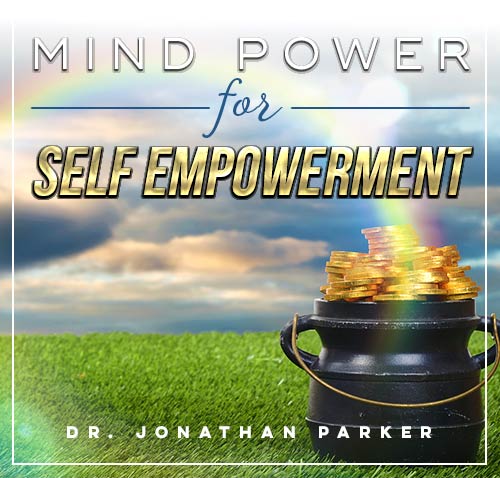How to Harness Brain Wave Frequencies for Relaxation

Before diving in, please note: This post is for informational purposes only. If you’d like to know more about how we approach topics, feel free to check out our friendly Disclaimer Page.
Hey there, amazing readers! 🖐️ Just a quick note: yes, we know there are a lot of ads here. Trust us, we get it—it’s not the prettiest look, but they help us keep this blog alive and kicking. Those pesky little ads cover the costs of all the behind-the-scenes magic, from hosting and tech stuff to creating content we hope you’ll love.
We’re committed to delivering quality posts, and your support (even just sticking around despite the ads) means everything to us. So, bear with us, and thanks for helping us keep the good vibes rolling. Now, on to the fun stuff! 😉
TRANSLATE BUTTON AT THE END OF THE ARTICLE
Understanding Brain Wave Frequencies
To harness brain wave frequencies for relaxation, it is essential to understand the different types of brain waves that our minds produce.
Brain waves are electrical impulses that the brain generates at various frequencies, measured in Hertz (Hz).
These frequencies indicate the state of our brain and can be influenced by external stimuli such as music, meditation, or even breathing techniques.
By tapping into these frequencies, we can promote relaxation, focus, or even improve sleep quality.
The Benefits of Relaxation Techniques
Relaxation techniques have numerous benefits for both the mind and body.
When we engage in practices that promote relaxation, such as meditation or deep breathing exercises, our bodies release neurotransmitters like serotonin and endorphins, which help reduce stress and improve mood.
Additionally, relaxation techniques can lower blood pressure, reduce muscle tension, and enhance overall well-being.
By incorporating these practices into our daily routine, we can experience improved mental clarity, better sleep, and increased resilience to stress.
Different Types of Brain Waves
There are four primary types of brain waves: Beta, Alpha, Theta, and Delta.
Each type corresponds to a different state of consciousness and serves a unique purpose.
Beta waves are associated with wakefulness and alertness, Alpha waves with relaxation and creativity, Theta waves with deep relaxation and meditation, and Delta waves with deep sleep and healing.
By understanding the characteristics of each brain wave frequency, we can tailor our relaxation practices to achieve specific outcomes.
Alpha Waves for Relaxation
Alpha waves are present when the brain is in a state of relaxed alertness, such as during meditation or light creative tasks.
To access alpha waves for relaxation, individuals can practice mindfulness, deep breathing, or visualization techniques.
Research has shown that alpha waves can help reduce anxiety, improve focus, and enhance creativity.
By incorporating activities that promote alpha wave production into our daily routine, we can experience a greater sense of calm and mental clarity.
Theta Waves for Deep Relaxation
Theta waves are associated with deep relaxation, meditation, and creativity.
These brain waves are present during the early stages of sleep and can also be accessed through deep meditation practices.
By promoting theta wave activity, individuals can experience profound relaxation, increased intuition, and enhanced problem-solving abilities.
Techniques such as guided visualization, progressive muscle relaxation, or yoga nidra can help induce theta waves and facilitate deep relaxation.
Delta Waves for Restorative Sleep
Delta waves are the slowest brain waves and are predominant during deep, restorative sleep.
These waves are crucial for the body’s healing and regeneration processes.
By promoting delta wave activity, individuals can improve the quality of their sleep and wake up feeling refreshed and rejuvenated.
Practices that induce delta waves include deep meditation, sound therapy, or listening to binaural beats designed for deep sleep.
Incorporating these techniques into a bedtime routine can help promote restorative sleep patterns.
Techniques to Access Alpha Waves
Mindfulness Meditation: Engage in mindfulness meditation practices to quiet the mind and promote alpha wave activity.
Deep Breathing Exercises: Practice deep breathing techniques to relax the body and mind, facilitating the production of alpha waves.
Visualization Techniques: Visualize peaceful scenes or calming images to stimulate alpha wave production in the brain.
Practicing Meditation for Theta Waves
Guided Meditation: Use guided meditation sessions to enter a state of deep relaxation and access theta waves.
Yoga Nidra: Incorporate yoga nidra practices into your routine to induce theta wave activity and promote relaxation.
Progressive Muscle Relaxation: Practice progressive muscle relaxation techniques to release tension and facilitate the production of theta waves.
Using Binaural Beats for Relaxation
Listen to Binaural Beats: Utilize binaural beats audio tracks designed for relaxation to entrain the brain to specific frequencies, such as alpha or theta waves.
Choose Appropriate Frequencies: Select binaural beats tracks that target the brain wave frequencies you wish to access for relaxation.
Set Aside Time for Listening: Create a dedicated space and time for listening to binaural beats to maximize their relaxation benefits.
Incorporating Yoga for Delta Waves
Restorative Yoga Poses: Practice restorative yoga poses that promote relaxation and help induce delta wave activity.
Yoga Nidra: Incorporate yoga nidra sessions before bedtime to prepare the body and mind for restorative sleep.
Deep Breathing Techniques: Combine deep breathing exercises with yoga postures to enhance relaxation and encourage delta wave production.
Tips for Harnessing Brain Wave Frequencies
Consistency is Key: Establish a regular routine for relaxation practices to optimize the benefits of brain wave frequencies.
Experiment with Different Techniques: Explore various relaxation methods to find what works best for you in accessing specific brain wave frequencies.
Create a Relaxation Sanctuary: Designate a peaceful space in your home for relaxation practices to enhance the effectiveness of brain wave entrainment.
Stay Hydrated: Drink plenty of water throughout the day to support brain function and overall well-being.
Practice Gratitude: Cultivate a mindset of gratitude and positivity to reduce stress and promote relaxation.
Creating a Relaxation Routine for Optimal Results
To create a relaxation routine that harnesses brain wave frequencies effectively, consider the following steps:
Set Aside Time: Allocate dedicated time each day for relaxation practices to prioritize your mental and emotional well-being.
Incorporate Variety: Include a mix of techniques such as meditation, deep breathing, yoga, and binaural beats to access different brain wave frequencies.
Personalize Your Routine: Tailor your relaxation practices to suit your preferences and needs, adjusting the duration and intensity of each activity.
Track Your Progress: Keep a journal to monitor how different relaxation techniques impact your mood, stress levels, and quality of sleep.
Seek Professional Guidance: Consult with a healthcare provider or therapist for personalized recommendations on relaxation techniques that align with your goals.
Conclusion
Harnessing brain wave frequencies for relaxation is a powerful tool for promoting mental and emotional well-being.
By understanding the different types of brain waves and incorporating specific techniques to access alpha, theta, and delta waves, individuals can experience profound relaxation, improved focus, and better sleep quality.
Whether through meditation, yoga, binaural beats, or deep breathing exercises, creating a relaxation routine tailored to your needs can unlock the benefits of brain wave entrainment and enhance overall quality of life.
Embrace these practices with consistency and an open mind to reap the full rewards of relaxation techniques rooted in brain wave frequencies.

The Enlightenment Journey is a remarkable collection of writings authored by a distinguished group of experts in the fields of spirituality, new age, and esoteric knowledge.
This anthology features a diverse assembly of well-experienced authors who bring their profound insights and credible perspectives to the forefront.
Each contributor possesses a wealth of knowledge and wisdom, making them authorities in their respective domains.
Together, they offer readers a transformative journey into the realms of spiritual growth, self-discovery, and esoteric enlightenment.
The Enlightenment Journey is a testament to the collective expertise of these luminaries, providing readers with a rich tapestry of ideas and information to illuminate their spiritual path.
Our Diverse Expertise 🌟
While our primary focus is on spirituality and esotericism, we are equally passionate about exploring a wide range of other topics and niches 🌍📚. Our experienced team is dedicated to delivering high-quality, informative content across various subjects ✨.
To ensure we provide the most accurate and valuable insights, we collaborate with trusted experts in their respective domains 🧑🏫👩🏫. This allows us to offer well-rounded perspectives and knowledge to our readers.
Our blog originally focused on spirituality and metaphysics, but we’ve since expanded to cover a wide range of niches. Don’t worry—we continue to publish a lot of articles on spirituality! Frequently visit our blog to explore our diverse content and stay tuned for more insightful reads.






